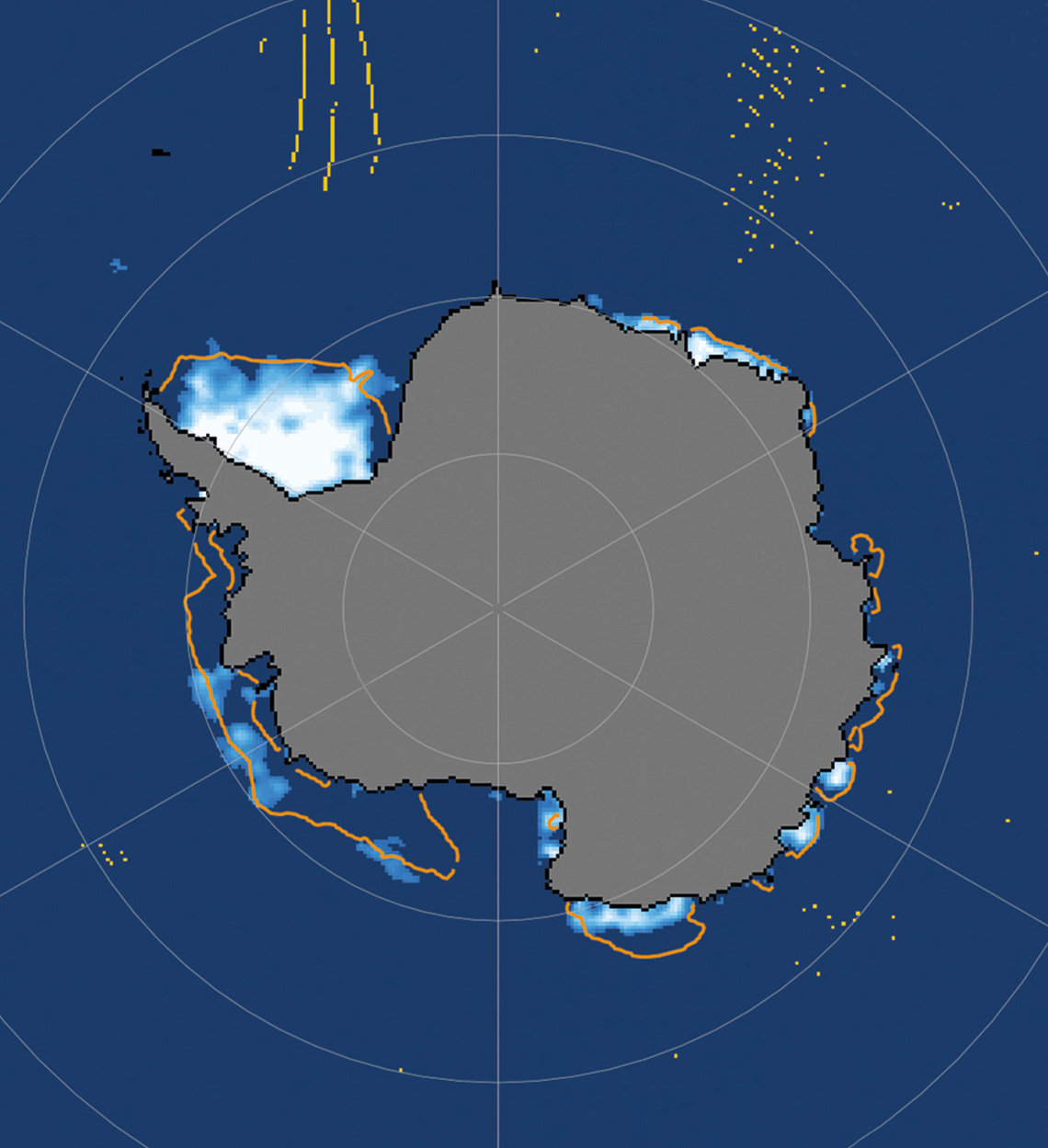
National Snow and Ice Data Center
The orange lines on the map delimit the areas of lost ice until 2023National Snow and Ice Data CenterAlthough it varies year to year, the area of sea ice around Antarctica is the smallest it has been since records began in 1979. On February 13, 2023, the ice area had fallen to 1.91 million square kilometers (km2). This is a new record low, less than the 1.92 million km2 recorded on February 25, 2022, and the second consecutive year in which Antarctica’s territory has been below 2 million km2. The decline could be even greater in the near future, since summer on the continent is not yet over. According to a team from the University of Colorado Boulder, USA, climate conditions are carrying warm air to the Antarctic peninsula and reducing the extent of the ice in the surrounding seas. Experts believe changing weather patterns and the loss of surface ice represent observable signs of climate change. In an interview with British newspaper The Guardian, Karsten Gohl of the Alfred Wegener Institute in Germany, who first visited the region in 1994, said: “The continental shelf, an area the size of Germany, is now completely ice-free. It is troubling to consider how quickly this change has taken place” (Arctic Sea Ice News & Analysis, February 14; The Guardian, February 15).
Republish